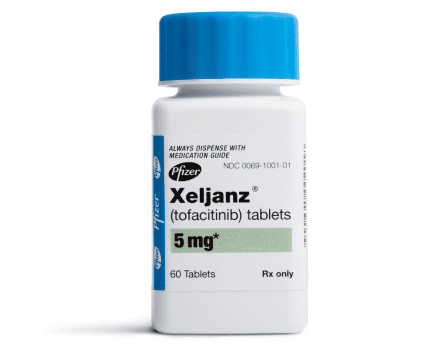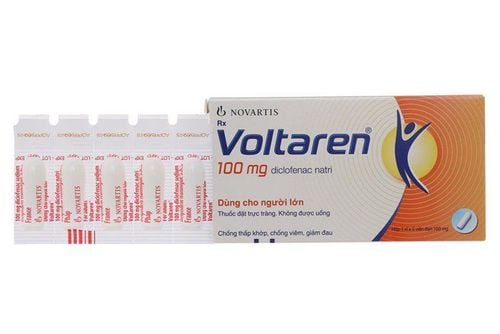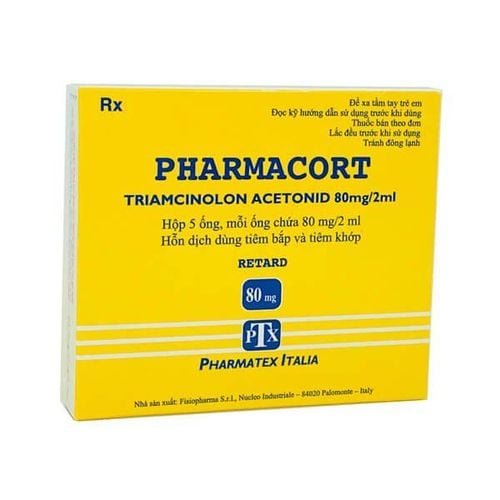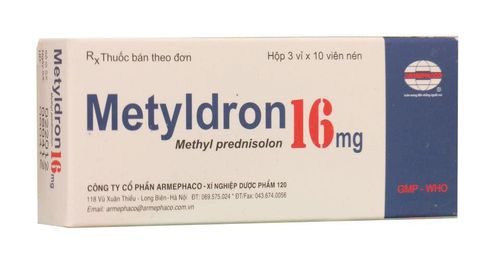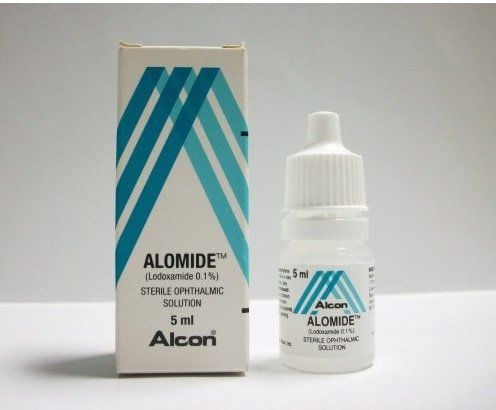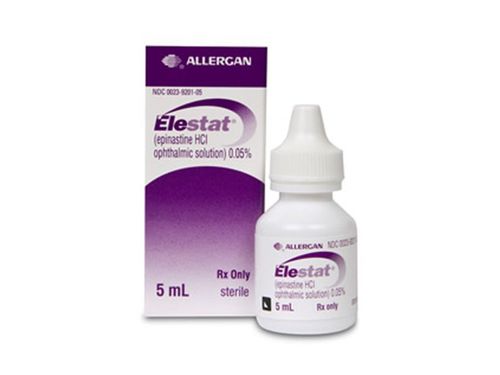This is an automatically translated article.
Cadidexmin belongs to the group of drugs that support anti-allergic reactions and common sensitization cases. To limit possible side effects after taking the drug, patients should refer to the article below to improve their understanding.
1. What is Cadidexmin?
Cadidexmin is a product directly manufactured by US Pharma USA - VIETNAM Joint Stock Company with registration number VD-35642-22. Support the treatment of rheumatic, endocrine, respiratory, cancer, nephrotic syndrome, ...
Cadidexmin drug has the main ingredients including Betamethasone with the content of 0.25mg and Dexchlorpheniramine maleate with the content of 2mg. Cadidexmin is made in the form of tablets, packed in bottles of 100 tablets and 500 tablets.
Storage conditions of the drug Cadidexmin are room temperature, below 30 °C, do not store frozen, do not let direct sunlight shine on the medicine.
2. Uses of the drug Cadidexmin
Each drug is designed to help treat the symptoms of a specific disease or condition. In particular, Cadidexmin is indicated for the following subjects:
Support for the treatment of rheumatic diseases: Rheumatoid arthritis, myositis, tendonitis, fibromyalgia, psoriatic arthritis, condylar atrophy, Acute and subacute bursitis, nonspecific acute tenosynovitis. Support the treatment of collagen diseases: scleroderma, scleroderma, systemic lupus erythematosus. Support the treatment of skin diseases: Psoriasis, keloids, erythema multiforme, contact dermatitis, exfoliative dermatitis, focal infiltrative lesions, discoid lupus erythematosus,... Allergic states : Seasonal or year-round allergic rhinitis, asthma attacks, chronic bronchial asthma, severe allergic bronchitis, atopic dermatitis, hypersensitivity reactions to drugs or insect bites. Support the treatment of endocrine diseases: Congenital adrenal hyperplasia, primary or secondary adrenal insufficiency, non-fusked thyroiditis,... Support in the treatment of eye diseases: Inflammation and allergies in the eyes , allergic conjunctivitis, diffuse choroiditis, keratitis, optic neuritis,... Support in the treatment of respiratory diseases: pneumothorax, pulmonary fibrosis, symptomatic sarcoid disease . Support in the treatment of blood diseases: Acquired hemolytic anemia, transfusion reactions, spontaneous or secondary thrombocytopenia. Support in the treatment of cancers: Leukemia in adults and acute leukemia in children, lymphoma in adults. Support for treatment of nephrotic syndrome: Cadidexmin supports proteinuria and edema for nephrotic syndrome. Support treatment of digestive diseases: Crohn's disease, ulcerative colitis bleeding, chronic autoimmune hepatitis, colon disease.
3. Contraindications of the drug Cadidexmin
Patients who are allergic or sensitive to the ingredients in the drug. Infants, premature babies, children under 6 years old. If you are taking a monoamine oxidase inhibitor, you should not use Cadidexmin. If you have a systemic fungal infection, you should not use Cadidexmin. With duodenal ulcer, stomach should not use Cadidexmin. If you have narrow-angle glaucoma, you should not use Cadidexmin. If you have a bladder neck blockage or an enlarged prostate, you should not use Cadidexmin.
4. How to use – dose of Cadidexmin
Patients need to know how to use and dose Cadidexmin to achieve the desired effect and limit side effects.
4.1. How to use Cadidexmin Drug Cadidexmin in the form of tablets should be taken orally with plenty of water. Absolutely do not take Cadidexmin with water in the refrigerator, tea, beer, coffee, ... will reduce or lose the effect of the drug. Take the medicine after a full meal and in the evening. 4.2. Dosage of drug Cadidexmin Use dose of Cadidexmin for adults and children over 12 years old:
Initial dose: 1-2 tablets x 4 times/day; Absolutely do not take more than 8 tablets/day. Use dose of Cadidexmin for children from 6 to 12 years old:
Recommended dose: 1⁄2 tablets, 3 times a day; Absolutely do not take more than 4 tablets / day.
5. Treatment of missed dose – overdose of Cadidexmin
5.1. Cases of forgetting a dose of Cadidexmin Similar to other drugs, when a dose of Cadidexmin is forgotten, the patient takes it as soon as he remembers. If the missed dose is close to the next dose, skip the missed dose of Cadidexmin to take the next dose, but do not double the dose to make up for the missed dose.
5.2. Cadidexmin Overdose Some of the symptoms that may be experienced with an overdose of Cadidexmin are appetite, sodium and water retention, osteoporosis, nitrogen loss, hyperglycemia, adrenal insufficiency, mental confusion, muscle weakness, decreased tissue regeneration,...
When an overdose, the patient should stop taking the drug, notify the doctor/pharmacist for handling or ask a relative to take him to a medical address for emergency. Your doctor will monitor your serum and urine electrolytes. If intoxication is chronic, treat electrolyte imbalance.
6. Side effects of the drug Cadidexmin
Side effects of the drug Cadidexmin are related to the dose and duration of treatment. Similar to other corticosteroid groups, using Cadidexmin causes patients to face: Disorders of electrolytes and water, digestion, skin, musculoskeletal, endocrine, nerve, eye,...
Common side effects:
Metabolic side effects: Sodium retention, water retention, potassium loss. Endocrine: Inhibits fetal growth in utero, inhibits growth of young children, menstrual disorders, decreases glucose tolerance, increases insulin requirements,... Skeletal muscle: Osteoporosis, muscle weakness, loss of muscle mass, skin atrophy, aseptic abscess. Uncommon side effects:
Psychiatric side effects: Patients with insomnia, mood swings, risk of major depression. For eyes: Cataracts, glaucoma. For digestion: Stomach ulcers, even perforation and bleeding, abdominal distention, esophagitis, pancreatitis . Rare side effects:
For the skin: Urticaria, atopic dermatitis, angioedema. Other effects: Anaphylaxis, lowering blood pressure,...
7. Cadidexmin drug interactions
In order for the use of Cadidexmin to be most effective, patients need to share with their doctor any other drugs they are using to avoid interactions.
Using Cadidexmin with Paracetamol may increase the risk of liver toxicity. Using Cadidexmin with antidepressants may increase psychosis. Using Cadidexmin with antidiabetic drugs may increase blood glucose levels. The use of Cadidexmin with Glycoside digitalis may increase the likelihood of arrhythmias with hypokalemia. Using Cadidexmin with Phenytoin, Rifampicin, Phenobarbiton or Ephedrine may decrease the therapeutic effect. Use of Cadidexmin with estrogen may alter metabolism, reduce clearance, increase elimination half-life, increase glucocorticoid toxicity. The use of Cadidexmin with Coumarin-type anticoagulants may increase or decrease the anticoagulant effect. Using Cadidexmin with nonsteroidal anti-inflammatory drugs may increase the severity of peptic ulcers.
8. Notes when using Cadidexmin
The use of Cadidexmin is highly effective when the patient adheres to the correct dosage, usage and note the following:
The lowest dose of Cadidexmin should be used to control the disease being treated. If the dose is to be reduced, it should be reduced gradually. When using Cadidexmin, caution must be exercised in the risk of congestive heart failure, myocardial infarction, diabetes, hypertension, liver failure, osteoporosis, psychosis, renal failure, peptic ulcer, hypothyroidism, etc. .. With immunosuppressive effects, using high doses of Cadidexmin may increase infection, patients should consult a doctor/pharmacist before taking the drug. Patients with active or suspected latent TB should not receive Cadidexmin. Risk of patients with chickenpox, severe Herpes zoster infection, measles when using Cadidexmin. Therefore, in the process of taking the drug, contact with these diseases should be avoided. If using Cadidexmin for a long time, it is necessary to monitor regularly, it is possible to reduce the amount of sodium, add potassium and calcium. Prolonged use of Cadidexmin can cause damage to the optic nerve, cataracts, glaucoma,... Cadidexmin can make patients somnolent, dizzy, psychomotor impairment,... Patients are drivers, machine operators should be cautious before using. Cadidexmin should be used with caution in the elderly (over 60 years old), pregnant and lactating women. The article has provided information about Cadidexmin drug uses, usage and dosage. Because Cadidexmin is a prescription drug, patients should not use it on their own, but need to contact a doctor/pharmacist directly to get an appropriate prescription and ensure safety for health.




